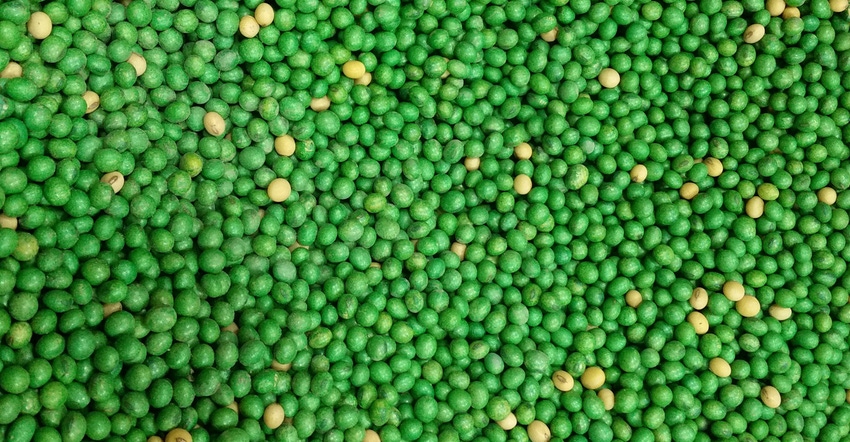November 20, 2020

A guy I know was helping his daughter who lived in the big city buy a late-model used SUV. It was her first big purchase, so she asked her dad to come along and help her through the process.
Well, “country dad” had typically dealt with smaller, local dealers where the auto buying process was pretty simple. Turns out he had a lot to learn about risk management and protection products that metro auto dealers had to offer; the deal only starts with settling on the vehicle price. You’ve invested in this nice vehicle, now you need to consider some products to protect it!
Country dad got to hear that his daughter’s car could be protected by gap coverage, several levels of extended driveline warranties, tire and wheel coverage, interior protection against all types of conceivable food or beverage disasters, and ceramic, titanium and plutonium thermonuclear-blast-resistant coatings that would ensure the car’s paint would shine like a new penny through the rest of this century. So, you can get just your SUV and live with various “risks,” or protect your auto from about anything if you are willing to pay for the various levels of protection.
Country dad’s description of the SUV being one part of the buying decision, and the plethora of risk management products being another part, sort of mirrors soybean seed treatments. You’re going to need the bean seed, so you know you’ll buy that. But then what potential calamities could face those beans? And what risk management products do you think you may need as protection against those risks?
Lots of choices available
The number of options available for beans these days is almost overwhelming: inoculants, fungicides, insecticides, nematicides, nutrients, biostimulants, other biologicals, flow additives and various active ingredients, rates, and mixtures across these categories. A good place to start sorting through them is a cheat sheet from University of Wisconsin called What’s on your seed?
If you pull this publication up, at first you may wonder why I would say it’s a good place to start, since by my rough count it covers around 160 different trade-named soybean seed treatment products. The upside is you and your seed dealer probably have narrowed down the options to the products they carry and are a likely fit for your fields. You can take that smaller list and check out the products you discussed to fine-tune them for your specific needs.
It takes some time for you and your seed dealer to do all this fine-tuning, but it’s time well spent since seed treatments can be a significant investment. Relatively basic protection may be in the ballpark of $15 to $20 per unit, and won’t take long to bump up into the $30s or more if you want to fight off the potential of multiple diseases, nematodes and insects, and throw in inoculant, some biologicals and flow additives.
Do some acres across the state need that type of protection? Probably, and some may not need much at all. Most fall in between. So, one way to approach this is to share some key things to consider and maybe help guide deeper conversations with your seed suppliers, who by the way are much more helpful in guiding risk management decisions than big city car dealers.
Fungicides — what to consider
Iowa State University research and regional academic publications find the odds of the right product benefiting you go up when you:
have a field with a history of soybean death syndrome or seedling disease
plant into wet, cool soils below 60 degrees F or into compacted soils
seed at rates under 140,000 per acre
practice no-till or reduced tillage
have a lot of surface residue
have a field with a history of floods
have high levels of seedborne fungal infection
did not rotate crops — second year (or more) of soybeans
plant bean varieties susceptible to soilborne diseases, such as phytophthora root and stem rot, and sudden death syndrome
Another factor to consider is some seed companies’ replant coverage programs have incentives tied to fungicide seed treatments, so that may factor in the decision in some cases.
Inoculants — when to apply?
With relatively low cost and no known agronomic downside, inoculants are a fairly safe bet in fields that haven’t had soybeans for several years. Some experts will include fields that had significant areas of beans flooded out in previous years.
Fighting soybean cyst nematode with seed treatments is a relatively new frontier, so good data is at a premium. Lucky for us, researchers like ISU’s Greg Tylka have been at the forefront working with many of the products to provide information.
For example, while nematicide seed treatments offer some early-season seedling protection, they’re not a silver bullet for season-long nematode control. Consider a seed treatment as just one additional nematode management tool. The two best tools for managing nematodes continue to be rotating crops and planting nematode-resistant soybean varieties.
To fine-tune the best fit for nematicide seed treatments, they are more likely to help if you:
have fields with a history of nematodes
combine the seed treatment with nematode-resistant bean varieties
have limited crop rotation options
have a manageable population of nematodes (nematicide seed treatments offer little protection with severe populations)
You’ve probably heard “Take the test. Beat the pest.” So before using a seed treatment, have recent SCN soil tests to determine if populations are in a range where treatment has a shot at being beneficial.
Insecticides — do they pay?
This line from a recent regional academic publication sums it up well: “You can use insecticide seed treatments to manage early-season insect pests, especially insects that injure soybean before growth stage V2. However, most soybean insect pests occur after this time.”
Circumstances exist where insecticide seed treatments are more likely to pay off, so don’t totally dismiss them. That list is included along with other good information at cropprotectionnetwork.com. Search there for “Factors to Consider Before Using a Soybean Seed Treatment.” That publication is one the best I’ve seen on seed treatments. Written in terms we can understand, it’s a must read if you plant soybeans.
Along with recommending a search of industry and Extension resources, look at the Iowa Soybean Association’s research programs. They’ve taken a good “on-farm” look at a broad selection of seed treatments, much of it replicated data gleaned from ISA member producers.
There aren’t perfect answers to what should go on our seed, but the good news is our local agronomists and seed dealers are there to partner with us to manage risk as best we can within our budgets. And even better, we don’t have to worry about them selling us ceramic, titanium and plutonium thermonuclear-blast-resistant paint protection.
McGrath is the Extension coordinator for the Iowa Soybean Research Center at ISU. Email [email protected].
Read more about:
Seed TreatmentAbout the Author(s)
You May Also Like






